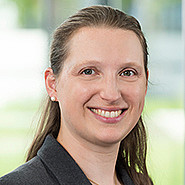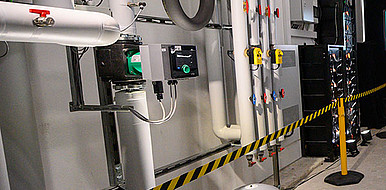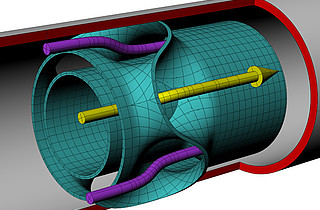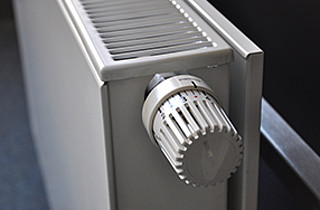Combined heat and power system for stationary electrical storage
Batteries as intermediate storage units are essential for volatile renewable energy production. They store surplus energy and thus cover gaps in supply. Due to their high performance and efficiency (85 - 95 percent), lithium-ion batteries (LIB) are usually used for this purpose. The high flammability and limited service life of LIBs stand in the way of this.
State of the art
In contrast, vanadium flow batteries (VFB) are non-flammable, promise a longer service life and a good economy of scale, making them popular despite higher investment costs and lower efficiency (65 - 75 percent). As LIBs have so far impressed with peak efficiency values, heat recovery has hardly been considered here. The use of waste heat has much more potential with VFBs.
Technology
A new type of heat transport system has been developed at KIT's battery technology centre that minimizes the disadvantage of low energy efficiency and energy density for VFBs and thus increases profitability. This so-called thermal coupling module (TKM) uses waste heat, which was previously released unused into the environment via cooling units, for heat recovery. The waste heat is generated in the electrolyte of the VFB and collects in the two tanks. A heat exchanger is embedded in each of the electrolytes to capture the heat there simply and efficiently. The thermal energy is then used in the closed system of the building technology to heat the building or to heat water. It is expected that this will increase the overall efficiency to around 85 percent. In addition to the original use of the VFB as an electrical storage unit, it also functions as a heat storage unit thanks to the TKM. For this purpose, heat is introduced into the storage tank by means of a heating element. This additional benefit increases the building's self-consumption rate, which leads to cost savings.
Advantages
The coupling module consists of standard building technology components. This means that it can be installed very cheaply in the long term. The savings in heating costs result in long-term cost benefits. The extended use as a heat accumulator increases the storage capacity enormously.
Options for companies
A demonstrator has been in full operation since fall 2023. It has an electrical storage capacity of 120 kWh, while heat storage increases the thermal storage capacity by a further 240 kWh. Now that the technical feasibility has been proven, KIT is looking for partners from the fields of building technology or energy storage to accompany the technology through to market maturity.
Your contact person for this offer

Innovation Manager Energy Karlsruhe Institute of Technology (KIT)
Innovation and Relations Management (IRM) Phone: +49 721 608-25335
Email: pelisson-schecker@kit.edu





